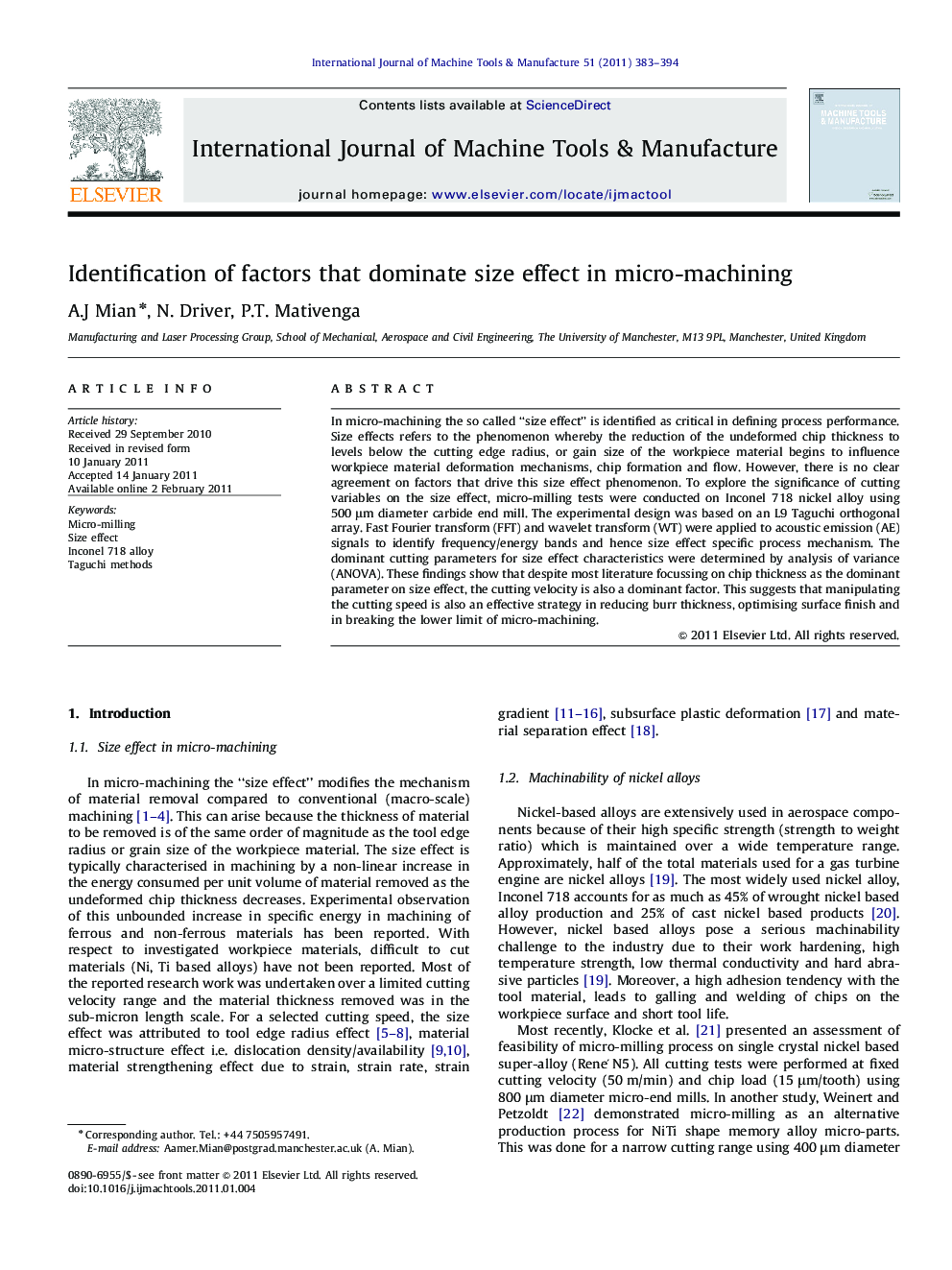| Article ID | Journal | Published Year | Pages | File Type |
|---|---|---|---|---|
| 780612 | International Journal of Machine Tools and Manufacture | 2011 | 12 Pages |
In micro-machining the so called “size effect” is identified as critical in defining process performance. Size effects refers to the phenomenon whereby the reduction of the undeformed chip thickness to levels below the cutting edge radius, or gain size of the workpiece material begins to influence workpiece material deformation mechanisms, chip formation and flow. However, there is no clear agreement on factors that drive this size effect phenomenon. To explore the significance of cutting variables on the size effect, micro-milling tests were conducted on Inconel 718 nickel alloy using 500 μm diameter carbide end mill. The experimental design was based on an L9 Taguchi orthogonal array. Fast Fourier transform (FFT) and wavelet transform (WT) were applied to acoustic emission (AE) signals to identify frequency/energy bands and hence size effect specific process mechanism. The dominant cutting parameters for size effect characteristics were determined by analysis of variance (ANOVA). These findings show that despite most literature focussing on chip thickness as the dominant parameter on size effect, the cutting velocity is also a dominant factor. This suggests that manipulating the cutting speed is also an effective strategy in reducing burr thickness, optimising surface finish and in breaking the lower limit of micro-machining.
